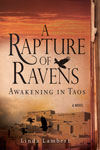The Muslim Brotherhood & The Cairo Codex 2
July 22nd, 2017
In 1928, a young schoolteacher named Hassan al-Banna was asked to establish the Society of Muslim Brothers. He was quite a visionary who sought Islamic renewal as well as an overthrow of British colonization. In the last chapter of The Cairo Codex as story of subjugation and humiliation chronicles the lack of respect and dignity rendered to Egyptians and Arabs by the British.
Ah, but I’m getting ahead of myself. Back to the story…. Between 1928 and 1938, al-Banna sought to link tradition and modernity. Egyptian society was conflicted with extreme traditionalism on one side and corrupted behaviors on the other. A broken sense of identity. With al-Banna’s leadership Egypt became a civil society, understood and delivered welfare support (this has continued to be the case today), land reform, housing and sought an socialist economic system which Nasser would bring about in the mid-50’s.
Then comes the lead up to Palestinian Arab nationalism and World War II….
Muslim Brotherhood & Cairo Codex 1
July 21st, 2017

The provocative historical novel, The Cairo Codex, the first in the Justine Trilogy, engages the history and struggles with the Muslim Brotherhood as central to middle eastern trauma. This series of entries will trace the Brotherhood from its inception to today, including how Egypt could and should reframe its misguided policies toward the 90 year old organization.
To begin with…the Brotherhood was formed in 1928 to resist British colonization. Nasser and Sadat were early members. Part 2 tomorrow…
The Pain of Finishing a Good Book
May 13th, 2017
Do you ever slow down dramatically as you near the end of a good book? Perhaps reading a page or two a day as though your daughter is going off to college or a good friend is moving away? Letting go is always hard and letting go of a good book is often a lonely journey, as you may be the only one reading it at the moment. When you finish, a certain sadness sets in and you will remember the characters for years to come.

I recently finished A Gentleman in Moscow by Amor Towles. The book moved slowly, like a piece of ethereal classical music. I took nearly a week to finish it. This is so unlike finishing a trade paperback mystery when you just want to know what happens. Recently, I finished Chernow’s Alexander Hamilton and had a similar, but different, experience. When he was shot by Burr, I was quite upset. My husband said, “Was that a surprise??” Well, no. I knew the history, but this time I lived it.
If you are a member of a good book club, the conversation can be therapeutic. It also helps to write in a journal or reflect in meditation about what you learned. For the gift of a good book is that we learn and grow…cognitively, emotionally and perhaps even physically. In anthropology, it is called “liminality,” that time when we separate ourselves from current reality, shed traditional roles, imagination soars and return transformed. We are never quite the same again.
How to Use a Novel as a Guidebook
January 19th, 2017
Nicholas Noyes of the NY Times recently wrote a column by that name. He describes the fascinating of following in the footsteps of Oliver Twist–having seen the film as a 5-year-old. An American who grew up in London, he found new eyes as an adult by traveling Oliver’s journey.
My historical novels known as The Justine Trilogy are anchored in real places and times. Whether in Cairo (The Cairo Codex), Italy (The Italian Letters) or Taos (A Rapture of Ravens), each site is real–there for the picking, pleasures to be harvested. Delectable visits into living history. My posts entitled 72 Hours in Cairo (Parts 1-3) take you on that journey. Several posts on Italy and Taos tantalize you, I trust, to journey there.
What is your favorite historical novel? Have you planned that trip as yet? Add it to your bucket list.
Liberating Leadership Capacity in the age of Trumpism
November 26th, 2016
This is the opening paragraph of my next text, written with Diane Zimmerman and Mary Gardner, and entitled, Liberating Leadership Capacity: Pathways toward Educational Wisdom. How timely in the days of Trumpism. We are confident that the lessons in this text democratize schools and societies. Is there still time??
“Ask a thousand random individuals about one of the most persistent problems in schools, organizations, and countries today and you are likely to hear: leadership. Yet there is little understanding about this elusive concept. Many hold a belief that in times of distress people often look for someone to be in control, a directive leader who can tell them what to do. School boards seek out dominant superintendents who can “take charge”; schools are assigned principals to guide or push teachers into current reforms and fads. We challenge the contention that directive leadership is justified. Schools and organizations are rich with talented, thoughtful individuals who, when given the opportunity to work in open, engaging, and democratic cultures, consistently emerge as leaders and innovators. Adults learn; children learn. Creating these learning, leading schools and organizations is the mission of this text, Liberating Leadership Capacity: Pathways toward Educational Wisdom.”
With the election of Trump, our country is turning away from democracy. Frightening times. A failure of history, culture and education. An awakening of painful ramifications. Yet, this time we know to protect our neighbors and also turn to strangers.
Next: Leadership Capacity is an essential antidote in cultures where peoples feel lost, alone, forsaken.
Reflections on the election: Sexism & Racism in America
November 11th, 2016
I don’t seem able to process my anger or grief over this election, so this response is my way of expressing what I believe and know to be true. A brief examination of history and culture in America explains what happened in this election, although many of us got side-tracked by what is right. (My thoughts below are not to say that Hillary didn’t have her flaws or baggage. But compared to Trump, she is nearly flawless.) We are perennially naïve. As a woman who grew up in Kansas, I should have known that I was kidding myself to think that a woman could be elected president in America at this time in history.
Bernie millennials lost their futures. I was afraid that Bernie had unearthed an innocent group of individuals who would “take their dollies and go home” when they didn’t get what they wanted. If they had shown up in more numbers, Bernie would have been chair of the Senate Budget Committee with tremendous power to fully implement Dodd-Frank (regulation of big banks and corporations), the Supreme court could have overturned Citizens United, college could have become affordable, civil rights and the environment protected and on and on.
As election scholars, David McCuan among others, have pointed out that Bernie was not electable. The right wing had kept their hands off Bernie because he was chipping away at Hillary. If he had been the candidate, it was clear that a Jewish, socialist, atheist individual could never be elected in middle America. Why did he do so well in the primaries? He, too, was a gruff father figure and thus better than a woman.
Gender politics. A Palestinian friend and I once considered writing a book to be titled “Middle West meets Middle East.” The thesis drawn from our experiences as women in both settings was that there was little difference between the two cultures. Our experiences were strikingly similar. Few women that I know in that part of the world consider a woman qualified to be president. Does it surprise anyone that 27% of Latino males voted for Trump? Many Latinos—and blacks– reported that a woman is unacceptable as Commander in Chief.
Further, as Lakoff points out, those who grew up with authoritarian fathers seek an autocratic candidate (al la Trump). Vance in Hillbilly Elegy described in this cultural tendency in detail among folks living in Appalachia and the Midwest.
Race in America. Racism, like sexism, is rampant in middle America and the south. Our history of slavery, a Civil War and Jim Crow laws still keep racism very much alive. Our founding fathers assured this legacy during the Constitutional Convention in Philadelphia when they allowed slavery to continue indefinitely, bolstered by the import of slaves until 1815. In cultural politics, we can never think, “well, those days are over.”
When LBJ said to MLK in reference to the civil rights act in 1964, “there goes the south,” it was crystal clear what he meant: the racist south would turn to the Republican party.
During the last eight years, racism and gun ownership and protection joined forces like never before. The KKK was so pleased to endorse Trump. White supremacist groups grew by 500% during the Obama administration. Was it inevitable that a racist would follow a black into the White House? I tend to think so.
A two-party system. Democrats have long drawn their power from the working man and woman. Labor. Increasingly, the educated elite, SNR (spiritual but not religious) and social justice devotees found a home among the Democrats as Republicans exited the party of Lincoln and Hamilton (particularly in the ‘60’s) and sought refuge in bigotry and rejection of “the other.”
Democrats lost labor when it followed the civil rights path into a womans’ right to chose, gay marriage, and LGBT bathroom rights. And, particularly, when it had the audacity to believe that we could have a black and a woman president.
Further, and just as important, we are in one of those major turning points in history: the transition from a manufacturing to a knowledge/technology society. Those caught in the middle do not have the skills or dispositions to make the transition. As a society, we must assist these 50-64 year olds until they can reach Social Security age and have faith that the next generations will be prepared for our new world. Further, individuals with large home mortgages voted for Trump—even in formerly Democratic strongholds. The economy recovery is still underway, many who have not yet caught up.
Republicans have rotted from within with racism and sexism and the worship of the autocratic father figure; but, now in charge, they will see fewer reasons to reform.
In Over our Heads. Robert Kegan wrote a provocative book by this title in which he pointed out that when life gets too complex humans retreat to tradition, a smaller world, known rules, and their tribes. The result: blaming the other, building walls, nationalism, self-protection, religion, and tribalism. How do we reverse this? That’s another essay centered on education and cultural transformation.
All said, it is a miracle that Hillary won the popular vote!
Liberating Leadership Capacity…Proud to Share a Great Review
September 11th, 2016
Liberating Leadership Capacity: Pathways to Educational Wisdom
reviewed by Hollie J. Mackey — August 09, 2016
Title: Liberating Leadership Capacity: Pathways to Educational Wisdom
Author(s): Linda Lambert, Diane P. Zimmerman, & Mary E. Gardner
Publisher: Teachers College Press, New York
ISBN: 0807757519, Pages: 148, Year: 2016
Search for book at Amazon.com

Linda Lambert, Diane P. Zimmerman, and Mary E. Gardner’s book Liberating Leadership Capacity: Pathways to Educational Wisdom presents a new concept of leadership based on establishing democratic interactions, engaging constructivist learning, and developing leadership capacity in school communities. The authors propose liberating leadership capacity as the foundation for effective school reform. This is the process of schools as organizations fully developing into constructivist learning organizations where: participation in professional reciprocal learning is high, healthy collaboration is a normative component of work, professional knowledge is generated from within, and school leaders develop site level strategies for systemic change that arise from practice. The authors believe leadership paradigms that structure leadership through top down models characterized by solo authoritarian type leaders are ineffective in nested sociopolitical organizations like schools where complex challenges require more than traditional forms of leadership can deliver. This volume suggests coupling constructivist leadership focusing on critical thinking and problem solving with developing leadership capacity to provide the necessary components for school leadership aligned with the goals of a democratic education system.
Lambert, Zimmerman, and Gardner neither disregard the complex challenges school leaders face nor dismiss the contributions of other leadership scholars. They instead submit that these challenges have not been thoroughly addressed through previous scholarship. As Andy Hargreaves states in the foreword:
Our school systems are not being challenged to address these more complex needs and sophisticated goals . . . More sophisticated learning requires more sophisticated teaching and leadership. Complex professional judgments cannot be prescribed, standardized, or driven by data . . . Linear top-down leadership may work for a short time for simple outcomes, but more sophisticated learning needs to be accompanied by more sophisticated leadership. (p. x)
Chapter One, “Leadership Redesigned,” provides an overview of leadership traditions in educational administration over the past 25 years and “offers a new definition of the concept” (p. 1) of leadership. The primary difference between the traditional model and the authors’ concept is that the former tends to rely on a few authoritarian figures within a building. The authors note the problems with this authoritarian style of leadership by stating, “[t]he uses of authority present a dangerous dilemma: a codependency, or dominance, sure to steer in unhelpful directions, away from a complex notion of leadership capable of more fully democratizing and building community capacities” (p. 5). The chapter outlines the evolution of thought regarding the effectiveness of authoritarian leadership and the shift to a more democratic school leadership approach. The authors conclude the chapter by building on their original work regarding constructivist leadership and redefining it as “fostering capacity through the complex, dynamic processes of purposeful, reciprocal learning” (p. 10) and claiming “how leadership is defined makes all the difference in how people participate” (p. 17).
Chapter Two, “Fostering Leadership Capacity,” introduces the social dynamic of capacity building on the premise that this type of building allows “a group of people to engage in and solve their own problems” (p. 21) and is a “function of leadership” (p. 22). The authors assess leadership capacity based on the skillfulness of leading and breadth of participation within a school resulting in four archetypes. They describe the typical skill and participation in each of these archetypes and present images depicting both the archetype matrix and authority distribution. They also discuss challenges arising with implementing interventions in each of the archetype locations and provide recommendations for overcoming them. The chapter concludes with the authors advocating for developing reciprocal and collaborative student and parent leadership capacities to work in partnership with schools.
Chapter Three, “Designing Professional Learning Cultures,” describes “designs, frameworks, and components for professional learning in high leadership capacity organizations” (p. 42). The chapter begins by advocating new professional learning designs when professional development is a reciprocal and continuous process for all members of the school community. The authors discuss the importance of including organized structural frameworks for learning cultures and stress: increasing levels of participation, developing skills, engaging in reflection, and holding meaningful dialogue. The chapter identifies specific leadership skills and actions “central to the movement from one archetype to another on the road to high leadership capacity” (p. 54) and advises leaders to look to and learn from exemplary programs.
Chapter Four, “Collaborative Dimensions of Leadership,” builds on the previous chapter by offering “four collaborative dimensions of leadership” (p. 65) and provides structure for facilitating the work of sustainable and collaborative learning communities. This includes: “(1) structuring efficient protocols for participation; (2) setting standards and working agreements for collaboration; (3) embedding the linguistics for listening into conversations; and (4) facilitating conversational flows” (p. 65). The authors discuss the importance of including this structure and note effective meetings that “create a sense of well-being and collective efficacy” (p. 82).
Chapter Five, “Democratization of Knowledge,” discusses the concept of knowledge and suggests that, “[r]econceptualizing knowledge flattens the hierarchy of knowledge production” (p. 88). The authors share three types of knowledge: knowledge-for-practice, knowledge-in-practice, and knowledge-of-practice and discuss their value as they apply to democratic learning communities. This chapter illustrates the differences in hierarchical structures between low and high leadership capacity schools where high capacity ones tend to have “flatter hierarchies [where] communities engage in systematic reflection in which knowledge is constructed, organized, and networked” (p. 100).
Chapter Six, “Creating Capacity for Systems Change,” considers why change is so difficult in schools. The authors believe that schools are nested within other systems and “[c]onstructivist change processes arise from practice, rather than being imposed on practice” (p. 103). Several U.S. examples illustrate how different schools use the concepts from Chapters Two through Five to move from low to high leadership capacity organizations. The authors also provide international examples where the same concepts are successfully applied and conclude “[a]n array of designs and principles awaits those who are committed to building democratic societies, thus liberating leadership capacity in every learner and learning community” (p. 122).
PATHWAYS TO EDUCATIONAL WISDOM
What sets Liberating Leadership Capacity apart from similar books is that it builds on constructivist leadership by adding developing leadership capacity including effective aspects of multiple leadership models such as transformational leadership, distributed leadership, sustainable leadership, and leadership for social justice. It suggests incorporating some of the most effective research based strategies for improving the learning climate at the school level and provides a strong rationale for how all of the components fit together. These two elements combined make it a relatively non-controversial book for use in leadership preparation programs. The authors’ key strength is that they write the book in easily accessible language and acknowledge a range of skills from which each school leader would start coupled with a range of participation across school sites. They also provide specific guidance for school leaders at all levels so no one would be left questioning how to begin liberating leadership capacity within their own schools once they finish reading the book.
School leaders might find the proposed strategies unrealistic given the policy constraints of unchallenged systems that are also nested within their own schools. The authors provide examples of schools that have realized success using these strategies, however these continue to be the exception and not the rule. The success stories within Liberating Leadership Capacity often involve other factors and conditions allowing for leadership to engage in an overhaul as a last step before closure.
Despite being well written, Liberating Leadership Capacity also requires more than one reading. At first glance it is a straightforward guide for improving educational organizations through developing leadership capacity. The authors also ask much deeper questions that cannot be ignored by educational scholars, policymakers, or practitioners. The epilogue speaks of pathways to educational wisdom and cues the reader to the bigger picture: scholarship does not affect organizational change that has meaningful consequence on the lived experiences of children and communities, it is instead achieved through practice. Lambert, Zimmerman, and Gardner illustrate the ways in which leadership theory might be translated into practice for the purpose of facilitating human flourishing.
The Justine Trilogy: the movies!
June 27th, 2016
Imagine a major earthquake in Cairo, anthropologist Justine buried alive, an ancient diary tumbling from the walls of a crypt. These are the promises of a major motion picture based on The Cairo Codex. In The Italian Letters, another ancient crypt
reveals the origin of Italians and the genealogy of the Virgin Mary. In a Rapture of Ravens, an avalanche in Taos, New Mexico, unearths and unravels the migration patterns of the Anasazi. Travel full circle back to the the Egyptian revolution and the faith of Justine’s lover. A gold mine for today’s special effects, these historical novels are unclose and personal with the struggle of today as well…the Muslim Brotherhood, religious conflict, challenging the truths of modern civilization.
Leonardo DiCaprio and Reese Witherspoon–where are you?
The Dangerous Future of a Junior High Boy
June 21st, 2016
There are few places as fertile as junior high schools in which to study arrested development. As a former junior high principal, it is pleasurable to recall those lovely young teenagers who are emerging into adulthood: the quiet, nerdy boys who loved science and technology; the junior athlete; the spirited student leader who always had the next new idea; the dreamy young girl writing poetry on her peachy. It was as though a parade of human development was unfolding before my eyes.
Before I went into education, I was a juvenile probation officer for a couple of years. This is when I first met young boys—and a few girls— who struggled with their own confused identity, who were either arrested in their development, or worse, were hard core enough to grow into adulthood as the same narcissistic bullies they were in junior high.
As a principal, these kids were easy to recognize once again. Fortunately, they were few in number. Never responsible for their own damaging behavior, when conflict occurred, blame was invariably attributed to others. They could do no wrong, nor did they harbor regrets. When asked to apologize, they might say, “He started it first. The teacher is stupid. I’ve got nothing to apologize for.” Later, the claim would become, “I never apologize.”
In public, these boys appeared to feel themselves superior to others. Contemptuous and quick to anger, their talk about others was often arrogant and condescending, contrasting their own relative perfection with the limitations of others. Others are “stupid,” “liars” or “crooked.” Worse yet, the failure of others may be explained by difference: they are girls, Blacks, Latinos, handicapped. In order to maintain their fragile sense of self, these young men consider one form of transaction essential: if you attack me, I must attack you.
Fortunately, as most individuals mature, they learn to rise about the fray, to take the high road, a road that is formed by values and nobler aspirations. But not for these young men, for they have to “even the score” each time. Since they hold grudges, they assume that others do too. These bullies use strength to hurt or intimidate those viewed as inferior or weaker.
Yet at the heart of all of this bravado is fear. Fear of being discovered, fear of not being enough, fear of not being loved. I often looked upon these young boys with compassion, sometimes a sense of failure, questioning: how can I reach him, redirect his life? There is hope. At the age of 12, a sensitive teacher or mentor can find the frightened child beneath and alter his future.
However, if these attributes and fears continue into adulthood, these individuals are not going to change. Further, if one of these men acquires wealth, power and the bully pulpit, he becomes a danger to those around him. Some may fool themselves into thinking his narcissistic outbursts can be moderated and controlled, shaped by history and institutions and law. Think again. The world is in for irretrievable damage.





 A sizzling new novel set in Taos, New Mexico. The third in the Justine Trilogy, preceded by the award-winning, The Cairo Codex and The Italian Letters. Buy it at your local independent bookstore,
A sizzling new novel set in Taos, New Mexico. The third in the Justine Trilogy, preceded by the award-winning, The Cairo Codex and The Italian Letters. Buy it at your local independent bookstore, 
